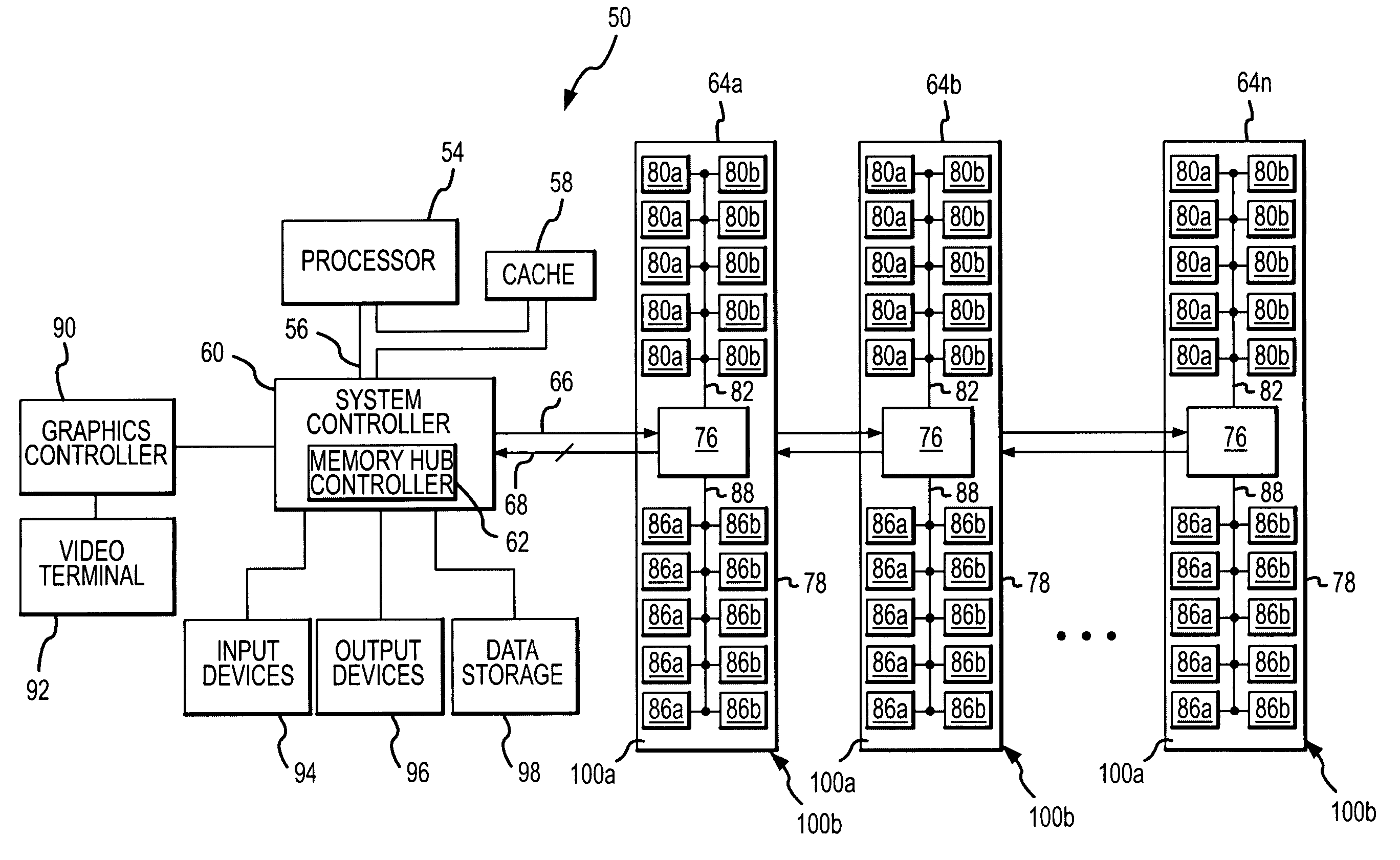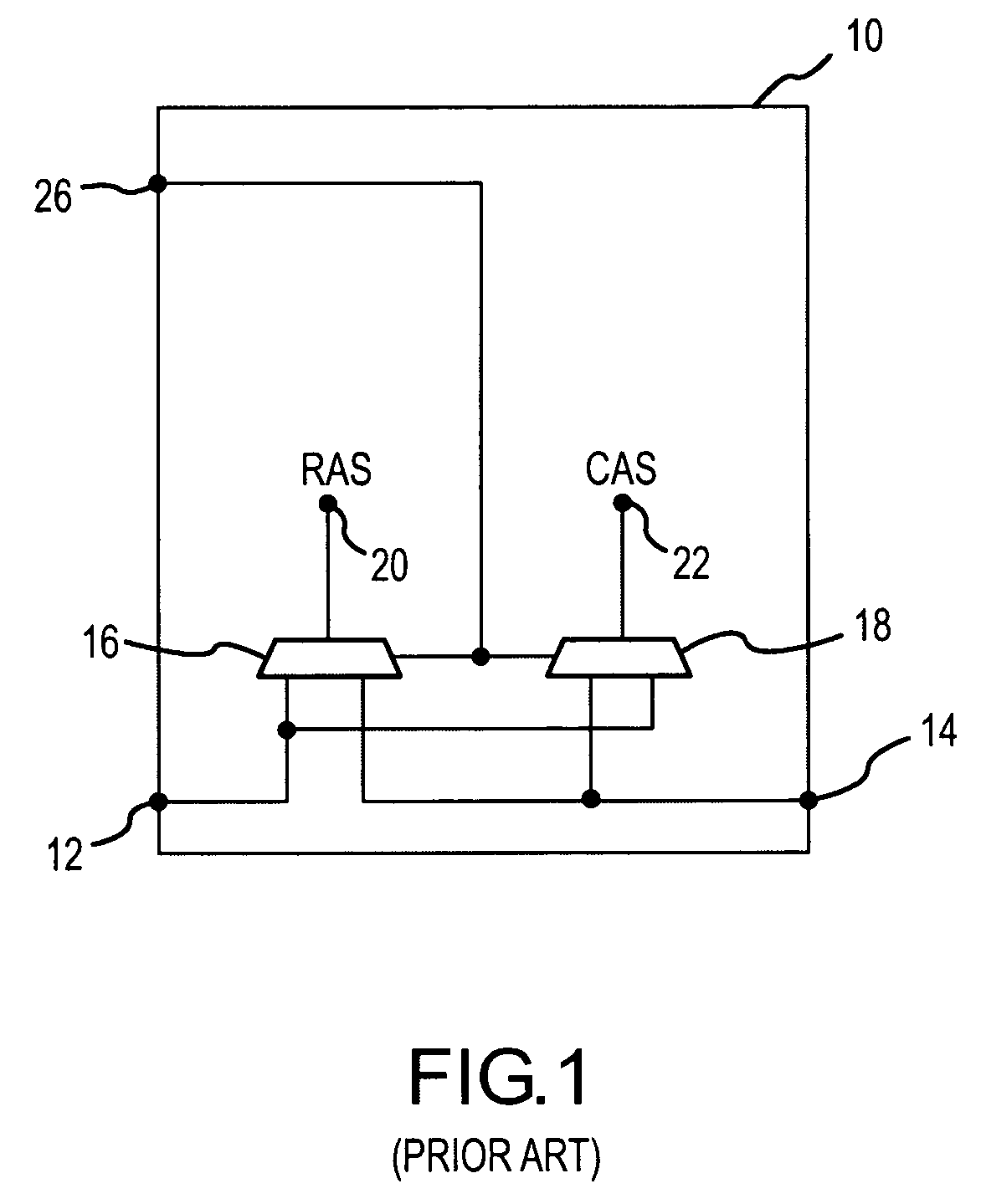Dynamic command and/or address mirroring system and method for memory modules
a memory module and dynamic command technology, applied in the field of memory modules, can solve the problems of excessive cross-talk between conductors, difficult routing of conductors to externally accessible terminals of memory devices, and relatively high cost of providing substrates
- Summary
- Abstract
- Description
- Claims
- Application Information
AI Technical Summary
Benefits of technology
Problems solved by technology
Method used
Image
Examples
Embodiment Construction
[0022]A computer system 50 according to one embodiment of the invention is shown in FIG. 4. The computer system 50 includes a processor 54 for performing various computing functions, such as executing specific software to perform specific calculations or tasks. The processor 54 includes a processor bus 56 that normally includes an address bus, a control bus, and a data bus. The processor bus 56 is typically coupled to a cache memory 58, which, is typically static random access memory (“SRAM”) device. Finally, the processor bus 56 is coupled to a system controller 60, which is also sometimes referred to as a bus bridge.
[0023]The system controller 60 contains a memory hub controller 62 that is coupled to the processor 54. The memory hub controller 62 is also coupled to several memory modules 64a–n, and the memory modules 64a–n are coupled to each other, through a downstream bus 66 and an upstream bus 68, which couple data, address and / or control signals away from or toward, respective...
PUM
 Login to View More
Login to View More Abstract
Description
Claims
Application Information
 Login to View More
Login to View More - R&D
- Intellectual Property
- Life Sciences
- Materials
- Tech Scout
- Unparalleled Data Quality
- Higher Quality Content
- 60% Fewer Hallucinations
Browse by: Latest US Patents, China's latest patents, Technical Efficacy Thesaurus, Application Domain, Technology Topic, Popular Technical Reports.
© 2025 PatSnap. All rights reserved.Legal|Privacy policy|Modern Slavery Act Transparency Statement|Sitemap|About US| Contact US: help@patsnap.com



